
riters have a split second to catch readers’ attention. Newspapers do it with headlines and arresting images, but novelists have three tools at their disposal—the book cover, title, and taglines.
Well-known writers can use an author tagline, such as: “By the author of the ______ series” or “By the Booker Prize winning author Joe Bloggs”. If you have an endorsement from another author or critic (“Joe Bloggs is a 21st century Dickens” ~ A.N. Other), you might be able to use that. However, if you have yet to hit the bestseller lists, these endorsements and statements are not really an option. You’ll need to write a novel tagline instead.
Even if prospective readers have heard of you, it’s the novel you are trying to interest them in. A good tagline will snag readers’ attention, so they pick up the book and read its blurb or download a sample. In addition to hooking their interest, it will stick in their minds; so if they are unable to buy your novel straightaway, they will come back to it. If your tagline’s memorable enough, they will tell their friends, too.
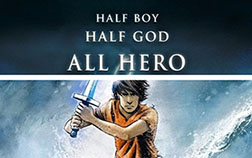
“The aim is to capture the spirit of the book and enhance the appeal of the cover image and title.”
Be a Tease
A tagline should have the impact of a slogan and not be much longer. The aim is to capture the spirit of the book and enhance the appeal of the cover image and title.
What a tagline isn’t is a summary of the story. That’s something best left to the blurb or logline, which usually mentions the main character, the conflict, and what stands to be won or lost. It is much longer and usually appears on the back cover or your e-book’s web page.
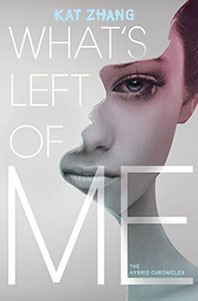
For example, here’s the tagline to Percy Jackson and the Olympians: The Lightning Thief by Rick Riordan: “Half boy. Half god. All hero.” (Puffin, 2013) It emphasizes the genre, but taglines don’t have to answer questions that the title and cover image leave uncertain. Often the more questions they provoke, the better. Kat Zhang’s novel, What’s Left of Me? (HarperCollins Children’s Books, 2012), has a cover showing part of a woman’s face within the outline of another. The novel could be a straightforward romance or about a woman’s search for her identity. The cover is interesting, but when you read the tagline: “Who would you give up to stay alive?” it gains an extra, sinister dimension. You automatically think about how you would answer and want to know how the novel does it.
“One-liners usually work best.”
Strike the Right Note
There’s definitely a knack to writing successful taglines, but it’s one that gets easier with practice. Remember, you aren’t trying to sum up the novel, but give some idea of its tone and spark the reader’s imagination.
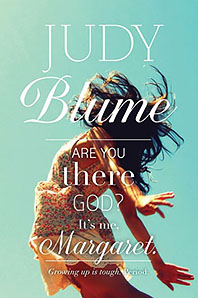
One-liners usually work best. They have a neatness about them that feels as if every word has clicked into place. Rhythm and sound are as important as meaning. Play around with the words until they feel right, as you would if you were writing a poem.
Double meanings and other wordplay, such as a twist on a well-known saying, can produce memorable taglines, but be wary of puns. All too often they make readers groan when you want them to smile or be intrigued. “Growing up is tough. Period,” for Are You There God? It’s Me, Margaret by Judy Blume (Simon & Schuster 2014) is a perfect example of effective wordplay.
Creating parallels or contrasts also works well, as in the tagline for Gemini Cell by Myke Cole: “For the dead, war never ends,” (Penguin Random House, 2015), which uses parallel phrases to suggest that dead and alive are the same. An incomplete sentence, such as: “Just when they thought it was safe to go back in the water,” for Jaws 2 (it’s a movie, but it’s the same principle), encourages readers to fill in the missing piece. Or you could try a list, like the tagline for Percy Jackson and the Olympians: The Lightning Thief above. A quote from your novel might be ideal, such as: “May the odds be ever in your favor,” from The Hunger Games by Suzanne Collins (Scholastic, 2012).
You want your tagline to complement or contrast with the other elements of the cover; so if a new edition has a different image, changing the tagline might be a good idea. The 2013 Headline paperback edition of Colette McBeth’s novel Precious Thing has a woman looking in a mirror on the cover and a tagline: “Don’t believe a word she says.” The 2014 Headline Review edition of the same novel shows two girls on a beach with a gap between them, in which the tagline says: “Best friends can make the deadliest enemies.” Try swapping the taglines around, and they don’t work half as well.
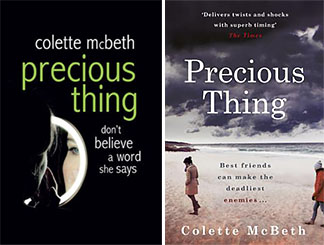
“You want your tagline to complement or contrast with the other elements of the cover.”
Dos and Don’ts
- Don’t mislead readers. You might come up with a really funny tagline; but if readers think they are getting a comedy when your story is a tragedy, they will feel cheated
- Do try several lines with readers you trust, and don’t be in a hurry to choose one: live with them for a while, and you will find out which is most memorable.
- Take a look at other novels to see what works, and don’t stop there: movie posters, newspaper headlines, and advertising slogans can all give you a feel for a good tagline.
Two for the Price of One
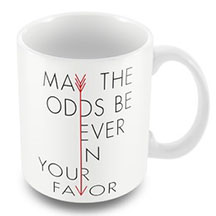
The benefits of taglines might seem out of proportion to the effort they take to create, but they can have a life of their own, appearing in places your novel might not reach otherwise. Use your tagline as a teaser on letterheads, e-mail signatures, press releases, and all your marketing literature, including flyers, posters, bookmarks, postcards, etc. If your novel has a dedicated Twitter, Facebook, or webpage, pin the tagline or use it in your profile. Taglines are the ideal length to tweet and are more interesting than a simple “buy my book” style tweet, especially when combined with the judicious use of hashtags. Add variety with spare taglines that didn't make it to the cover but still have impact. When you consider all the other places you can use taglines to spark interest in your novel, writing them is time well spent.
Novelists have to switch from writing what is probably the longest work they will ever produce to the shortest. Mastering the art of the tagline is a big step in making sure your book gets noticed.
***

K. S. Dearsley has freelanced for more than twenty years for newspapers and periodicals, work which involved providing snappy captions and eye-catching headlines. She has also had flash fiction, short stories, and poetry published in a range of magazines and anthologies. Her fantasy novels are available on Amazon and Smashwords. Find out more at: https://www.ksdearsley.com.
-----
Enjoyed this article? Check out these related articles on WOW!:
Creating Book Covers that Sell!
Hiring Your Book Design Team
Blame it on the Book Cover: Women's Fiction vs. Chick Lit
Book Titles, Back Cover Copy, and Author Promotion: Tips from Susan Kendrick